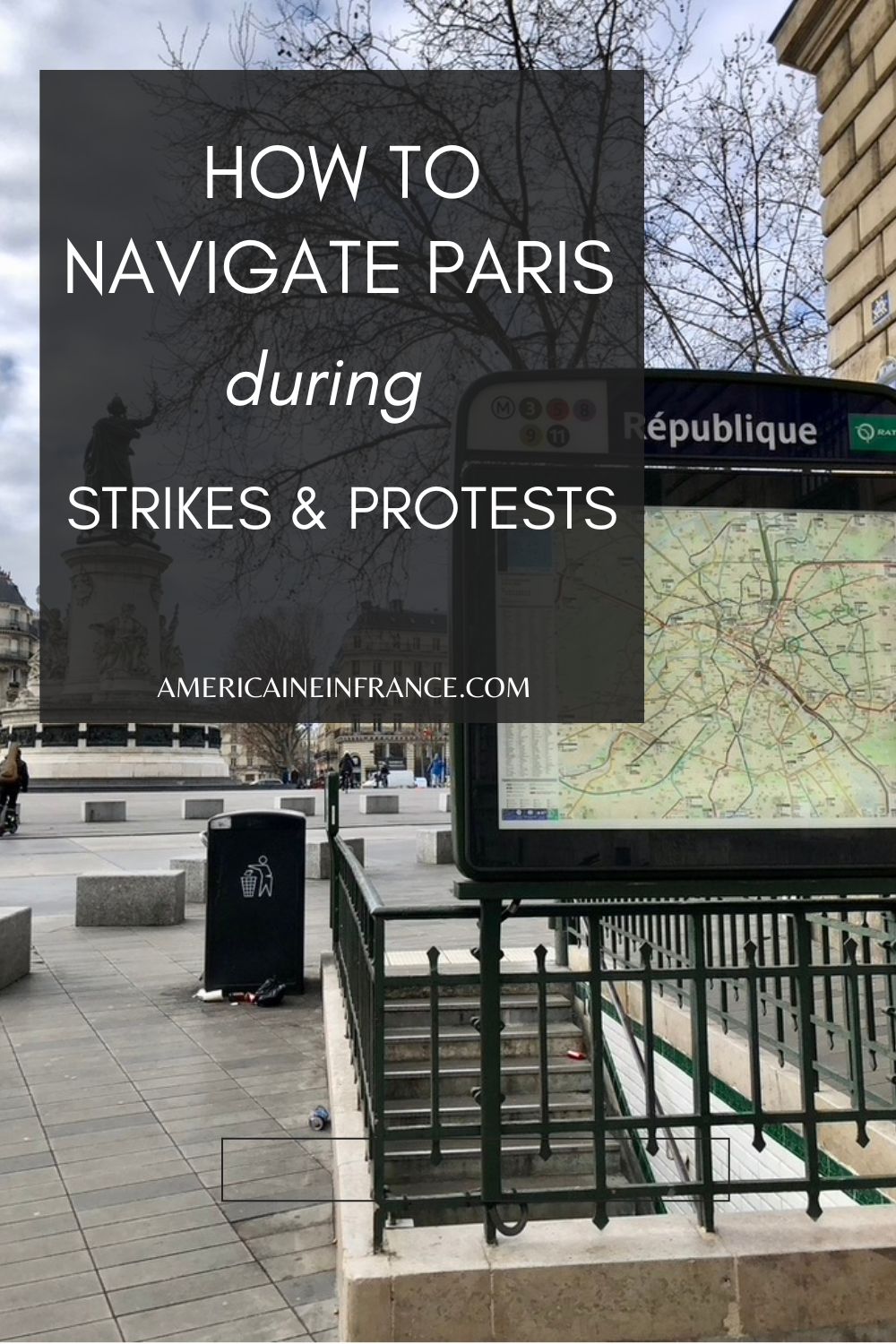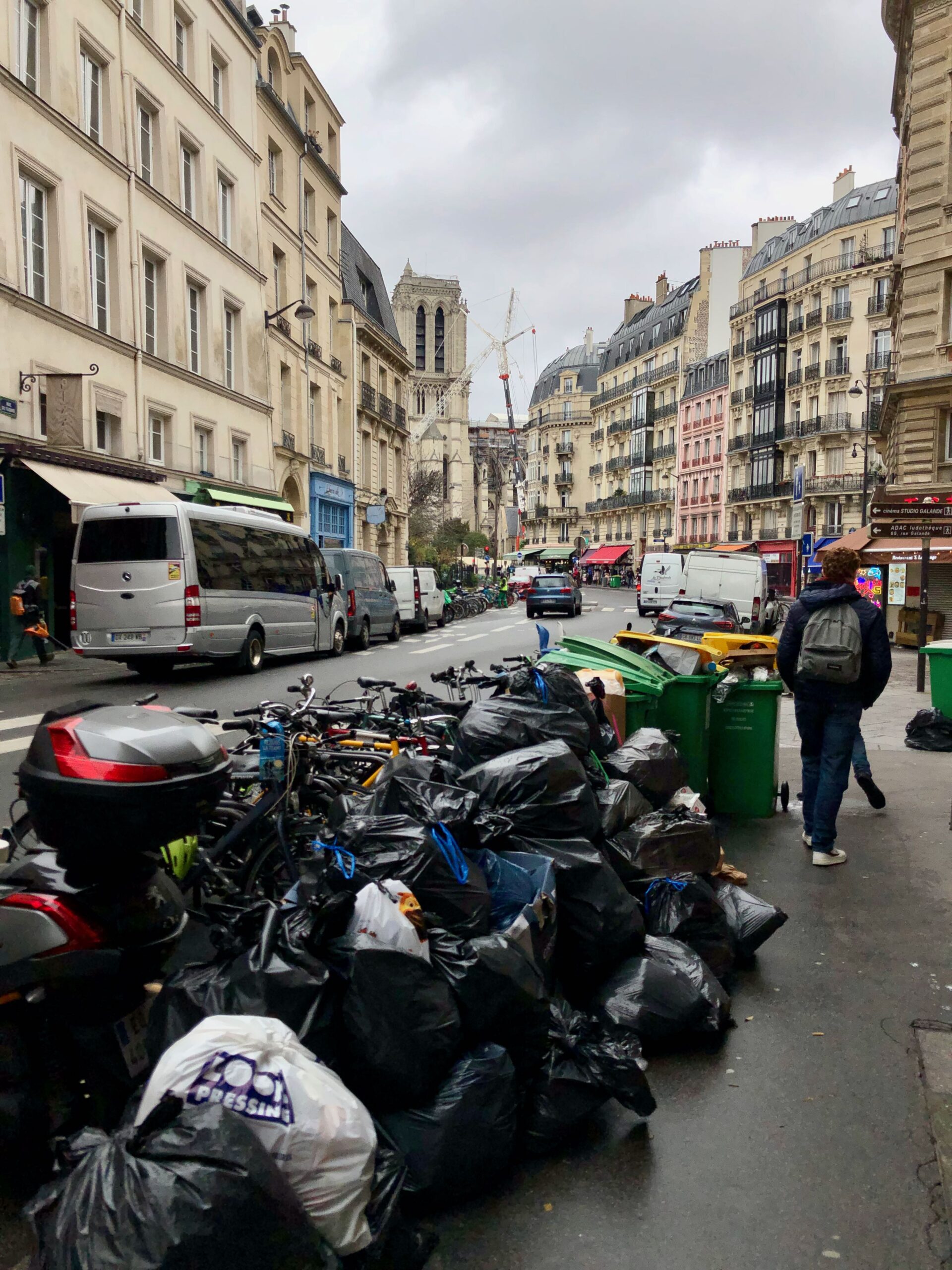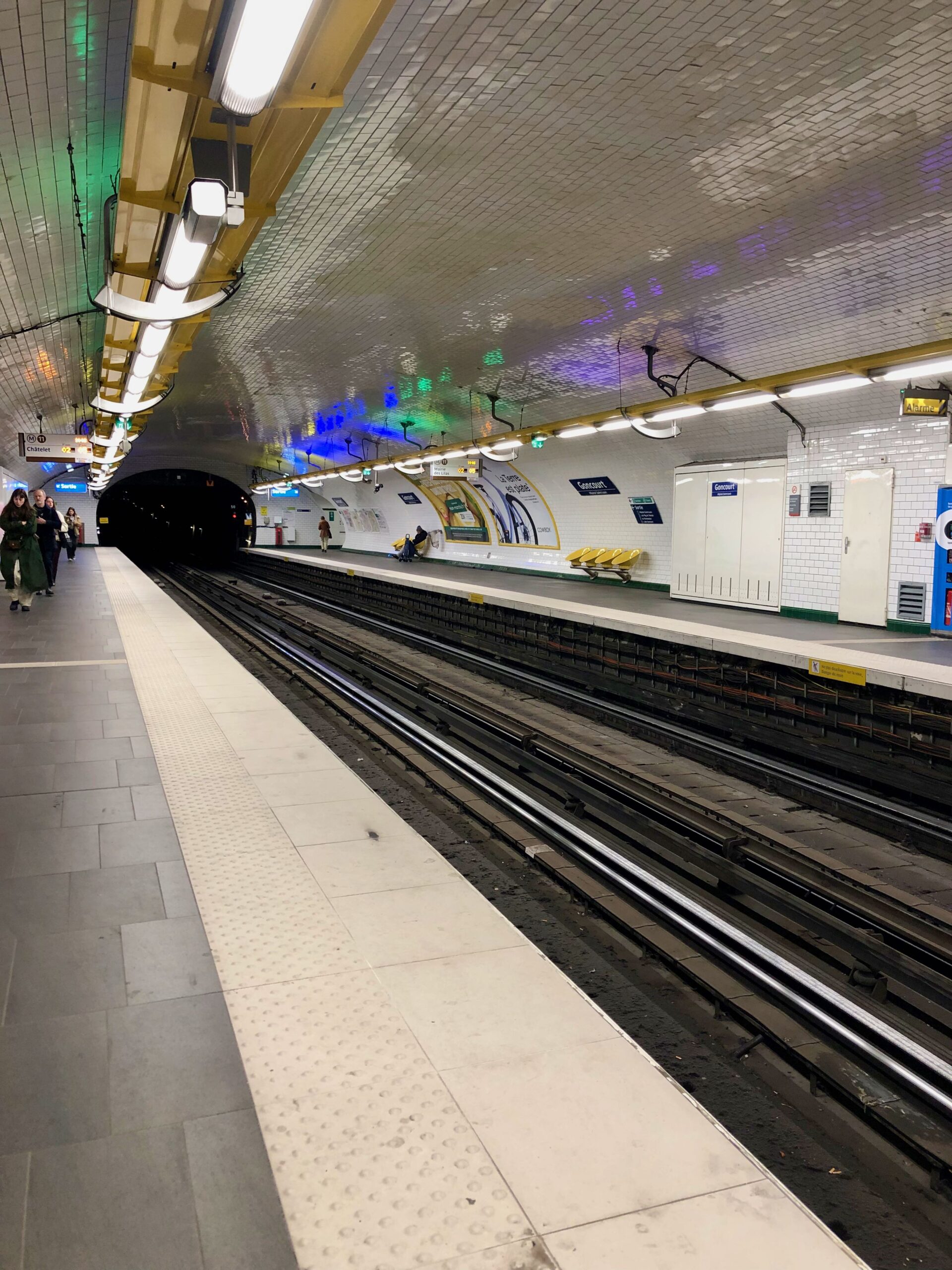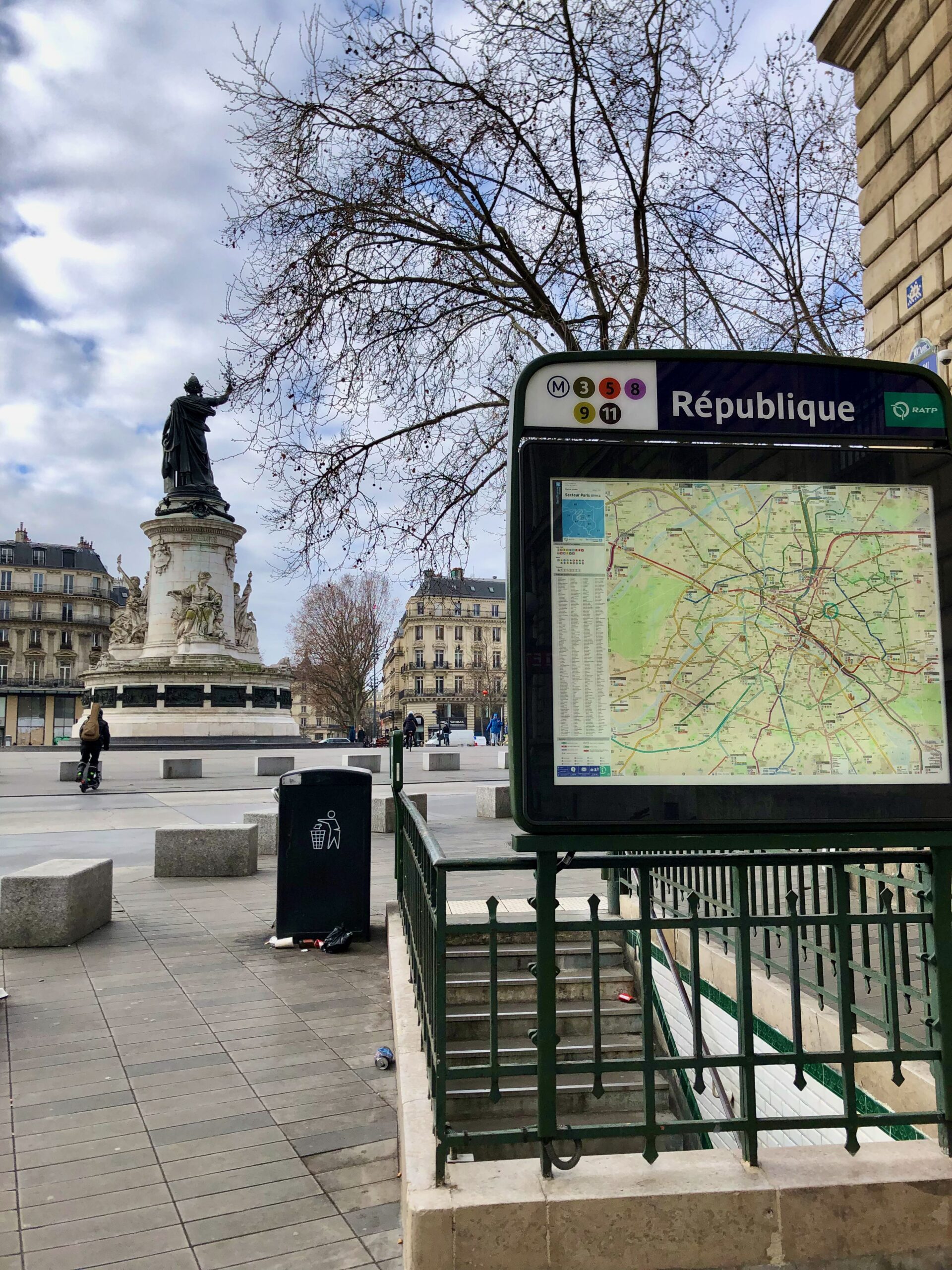This post may contain affiliate links, meaning that if you click and make a purchase, I may earn a commission at no additional cost to you. Read the full disclosure here.
Last Updated: April 22, 2023
Strikes and protests are an inevitable part of life in France and particularly in the capital. Knowing what to expect and how to navigate Paris when there is a demonstration is essential for your safety and your sanity. Here are the precautions to take in order to ensure a smooth visit to the city even when there is civil unrest.
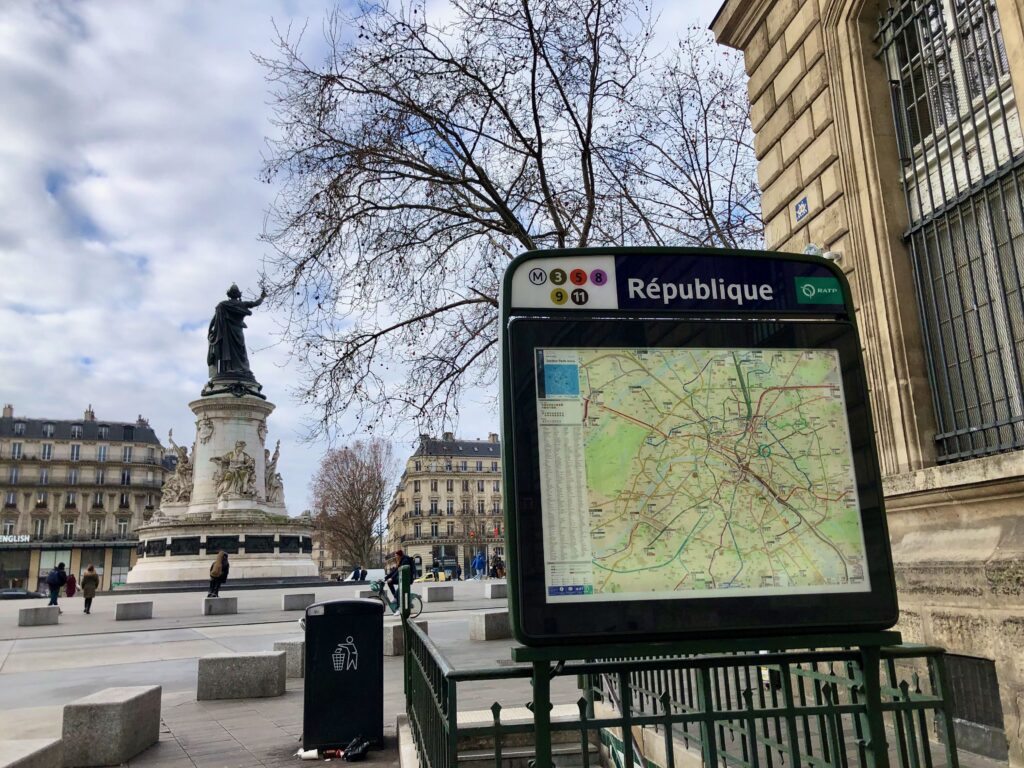
The Predictability of Protests in Paris
Official strikes and protests in France are generally planned in advance. In fact, in Paris, protest organizers are required to declare a number of details to the préfecture. As a result, dates, times, and routes are typically made public ahead of time.
Grèvistes, the people participating in the strike, do not necessarily have to declare their intention to strike in advance, but it depends on the sector that they work in. Understandably, there are more rules and regulations for those working in the public transportation or air travel sectors.
Throughout France, strikes most often fall on Tuesdays and Thursdays as these are the two best days to assemble the largest number of people. It is very rare to have a strike on a Monday, in part, because leaders typically convene the previous day in order to finalize details. No one wants to give up their Sunday! Additionally, since Mondays and Fridays are often taken off by employees to enjoy a long weekend, these are not ideal strike days. Wednesdays are also not regularly chosen for rallies because many schools in France have a half-day. Parents who take a half-day or a full day off work to care for their children would have a harder time attending a gathering on a Wednesday.
In Paris, the majority of demonstrations begin in the afternoon, at 2 PM, further adding to the predictability of protests!
Certain areas of Paris are well-known spots for gatherings. Here’s a quick list: Place de la Bastille, Place de la Nation, Place de la République, Place de l’Opéra, Place de la Concorde, Place Vauban, and Place de l’Italie. With many of these open areas holding historical significance, they are ideal starting and ending points for demonstrations. You’ll find that many protest marches follow a route between these spots.
Keeping Up to Date With the Latest Protest News
Here are some of the best sources of information regarding current and upcoming strikes in Paris:
Cestlagreve.fr
This is a reference site listing the dates of all the strikes taking place throughout France.
France 24
Also available as a phone app, France 24 makes worldwide news available in multiple languages. In my opinion, the reporting on this channel is usually accurate without too much sensationalism.
Actu.fr
This website regularly has a clear map of the designated protest route. Try doing a Google search for, “actu.fr carte manifestation paris,” and the most recent strike route is likely to show up in the results. Personally, I usually do a slightly broader Google search, for example, “parcours manifestation Paris 23 mars carte,” switching out 23 mars for the current date. Actu.fr is frequently one of the first websites to have this information. Other websites where I’ve commonly been able to find a visual map of the march route include franceinfo, Le Parisien, and CNEWS.
Getting Around Paris During a Strike
Depending on the demonstration areas and chosen route, certain zones and streets in Paris might be blocked off, making it harder to get around, even on foot. Metro stops are sometimes closed along strike routes and are routinely closed near the start and end spots of the protest. Buses might deviate from their usual route to go around protest areas.
In the event of a transportation strike, metro, RER, tram, and bus lines in Paris might be affected. Common disruptions to public transit service range from trains only running during peak hours and/or fewer trains running than usual to lines being fully shut down for the entire day.
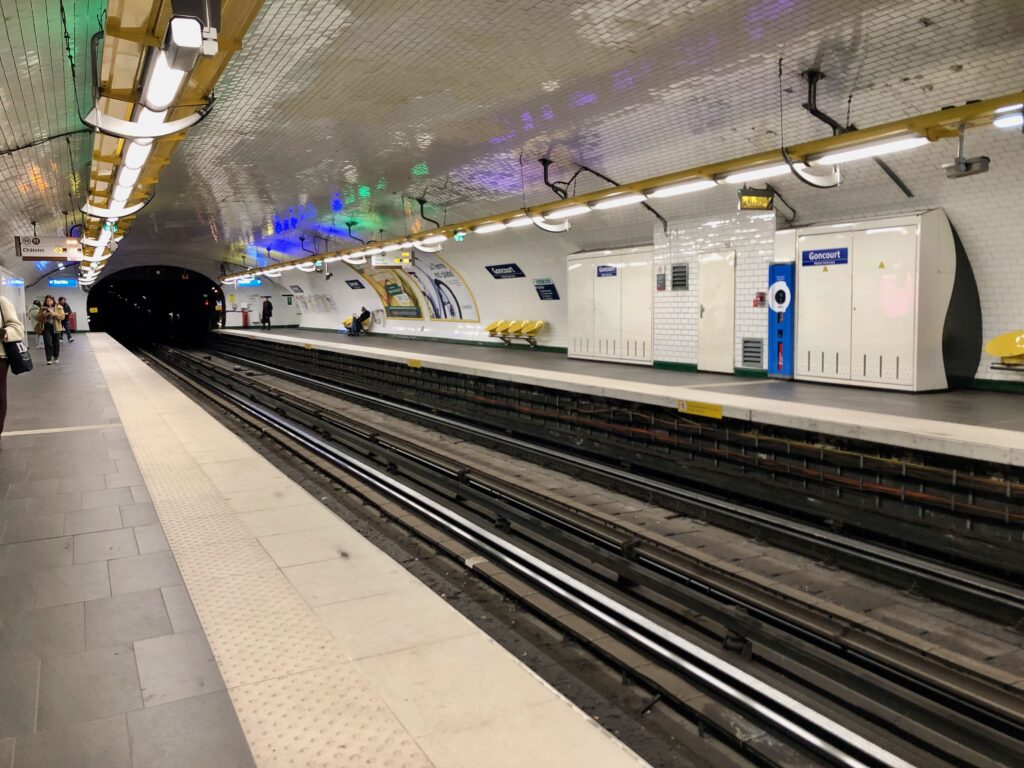
Best Transportation Apps for Paris
Citymapper is by far the best app for navigating Paris. Even during a strike, it accounts for closures, delays, and deviations. This phone app stays relatively up to date with the latest developments and is excellent for having a broad view of all available transportation options. However, as great as it is, keep in mind that it is not 100% accurate.
Related: Essential Phone Apps for Your Trip to Paris
Bonjour RATP is the official public transportation app for the entire Ile-de-France region. It’s not great for navigation, but it does allow you to get an overview of which lines are running. On the trafic tab, you’ll find the current status of each line. You can also access each line’s Twitter feed which will give you even more detailed information.
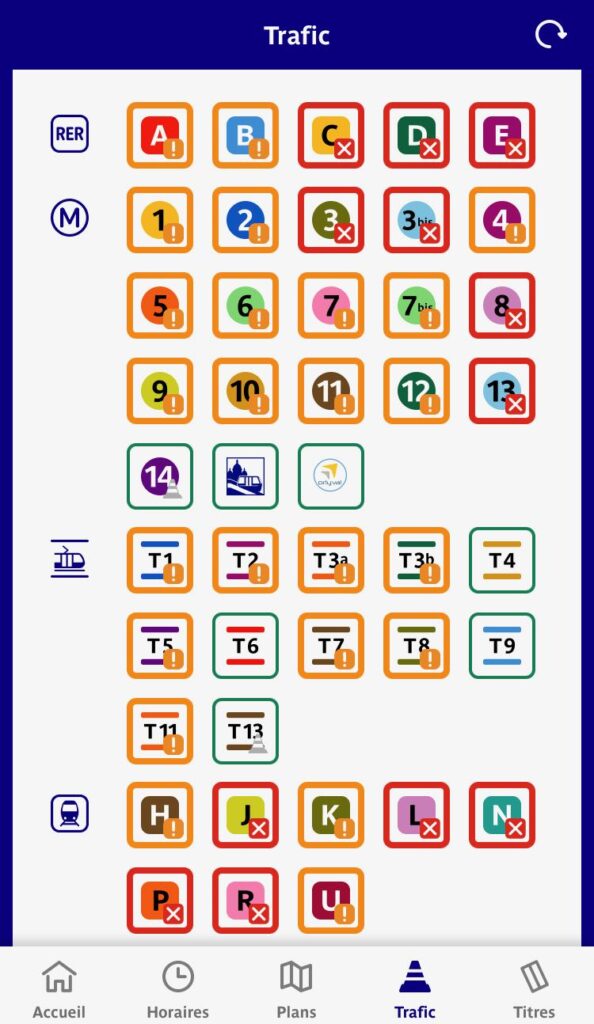
Bonus: If you’re traveling by train in France, download SNCF Connect.
Transportation Options During a Strike
Patience and planning are key! In all cases, allow yourself plenty of time to get where you are going.
Metro/RER/Tram/Bus
Estimated service predictions are available through the RATP the previous day and usually by 5 PM. If services are limited, metro cars and buses will be much more crowded than usual. Prepare to sardine yourself!
Metro Line 1 and Line 14, being fully automated, always stay up and running. Line 1 in particular is well-known as the tourist line. It crosses the city from the east to the west, offering access to many of the major centralized tourist spots in Paris.
Batobus
Operating from 10 AM to about 5 or 7 PM depending on the season, Batobus can be a fun alternative transportation option for tourists in particular. You can hop on and off at 9 stops along the Seine River and completely avoid the demonstrations altogether!
Taxi
Taxis are my least favorite option for getting around Paris, and during a strike, they might not even be particularly practical with road closures. However, if you need to get to or from the Paris airport when the RER is down, they could be a great workaround! Consider booking private transport in advance. G7 taxis are my go-to.
Vélib
Avoid the crowds by taking a bike with Vélib, a bike-sharing service in Paris. Of course, you’ll have to keep in mind that you won’t be the only one with this brilliant idea!
Walking
The most guaranteed transportation option is a self-propelled one. As mentioned earlier, be sure to check protest routes so that you don’t inadvertently get stuck on the wrong side of the demonstration. Otherwise, it can be a long walk around!
Key Strike Vocabulary in French
Une grève—a strike
Une grève générale—a multi-sector strike
Une grève illimitée / une grève reconductible—an indefinite / renewable strike
Une manifestation—a demonstration, often used to talk about a protest march
Une mobilisation—a mass, public movement/rally for a cause
Un mouvement social—a social movement, often used to talk about a strike or protest
Perturbé—disrupted, used in reference to metro or bus lines
Ex. Le trafic est (très) perturbé sur l’ensemble de la ligne.
Traffic is (very) disrupted on the entire line.
This means that the line is still running but with delays or closures.
Interrompu—halted or suspended
Ex. Le trafic est interrompu sur l’ensemble de la ligne en raison d’un movement social.
Traffic is suspended on the whole line due to a social movement.
This means that the line is not running at all.
Desservi—served
Ex. L’arrêt n’est pas desservi à Saint-Michel.
No stop will be made at Saint-Michel.
Fermé—closed
Ex. Les accès à la Station Barbès-Rochechouart sont fermés. Les correspondances dans la station sont impossibles.
Access to the Barbès-Rochechouart station is closed. Connections in the station are impossible.
This means that you won’t be able to get on or off at this station.
Staying Safe During Protests in Paris
There are demonstrations taking place literally every week in Paris. The vast majority of these demonstrations are on a small scale and don’t even make headlines.
Indeed, striking and making your voice heard in the streets is a way of life here in France. Strikes and protests on the whole are largely peaceful, contrary to the fiery images the media chooses to focus on. If protests are not something that you’re used to and your only reference is the evening news report, I can certainly understand why they might make you anxious.
Yes, there are large crowds of people making a ton of noise, shouting their frustrations, and shaking signs. But there are also people singing and dancing to music. You’ll even see kids riding on the shoulders of their parents and babies being pushed in strollers. Rallies bring people of all ages together in comaraderie.
Is Paris safe when there are protests going on?
Of course, crowds can get rowdy. This is human nature really. Furthermore, depending on the subject of the demonstration and the scale, emotions can run high.
It’s typically at the end of a demonstration when small groups might break off and cause some trouble in the night. This can include setting fires in trashcans, overturning bikes and scooters, breaking windows, and other acts of vandalism to property.
It should be noted that this level of destruction and rioting is definitely not happening after every protest and rally. As previously mentioned, the majority of demonstrations are peaceful, from start to finish.
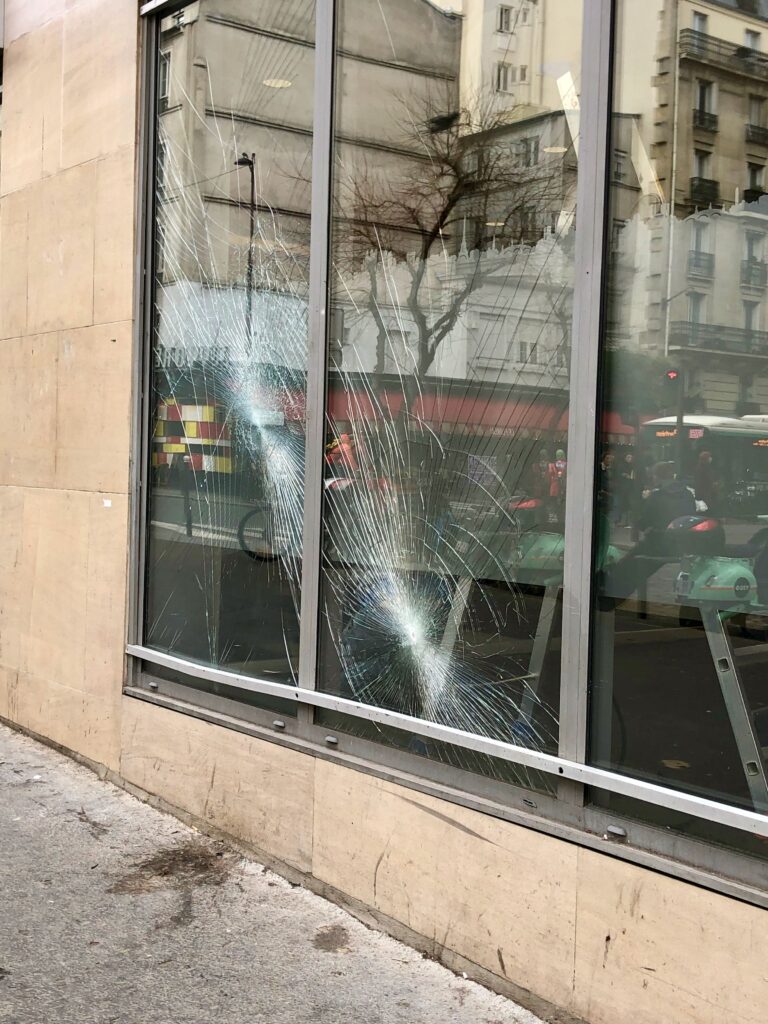
When I’m asked if Paris is safe during the protests, I have a hard time replying because “safe” is a relative feeling. What is safe for me might not feel safe or comfortable for you.
Overall, I do not feel unsafe in Paris during protests or more elevated civil unrest. The majority of my day is mostly unaffected. In the afternoons and evenings, I’m ok with avoiding areas where demonstrations are happening. While seeing rioters destroying property is unpleasant, if I came upon a group of casseurs, I would just turn and walk the other way. Taking a longer route home due to metro closures or crowds does not make me nervous.
At the end of the day, you have to decide what you are comfortable with.
Should you cancel or postpone your trip to Paris?
While protests are the norm here, it is true that prolonged demonstrations have a tendency to escalate and the level of inconvenience is heightened. This is what we’ve seen with the protests against the new retirement reforms in France this year.
Here’s my advice:
Understandably, large piles of trash and needing to stay on top of the news and adjust plans as needed can put a damper on your mood. Having a set schedule or a fixed idea of what Paris should look like will likely lead to disappointment. If this is the case for you or if you have mobility needs that require unobstructed sidewalks and/or reliable transportation services, postponing might be a good idea. In a similar vein, if large-scale protests and rallies make you uncomfortable or nervous, then canceling might be advisable.
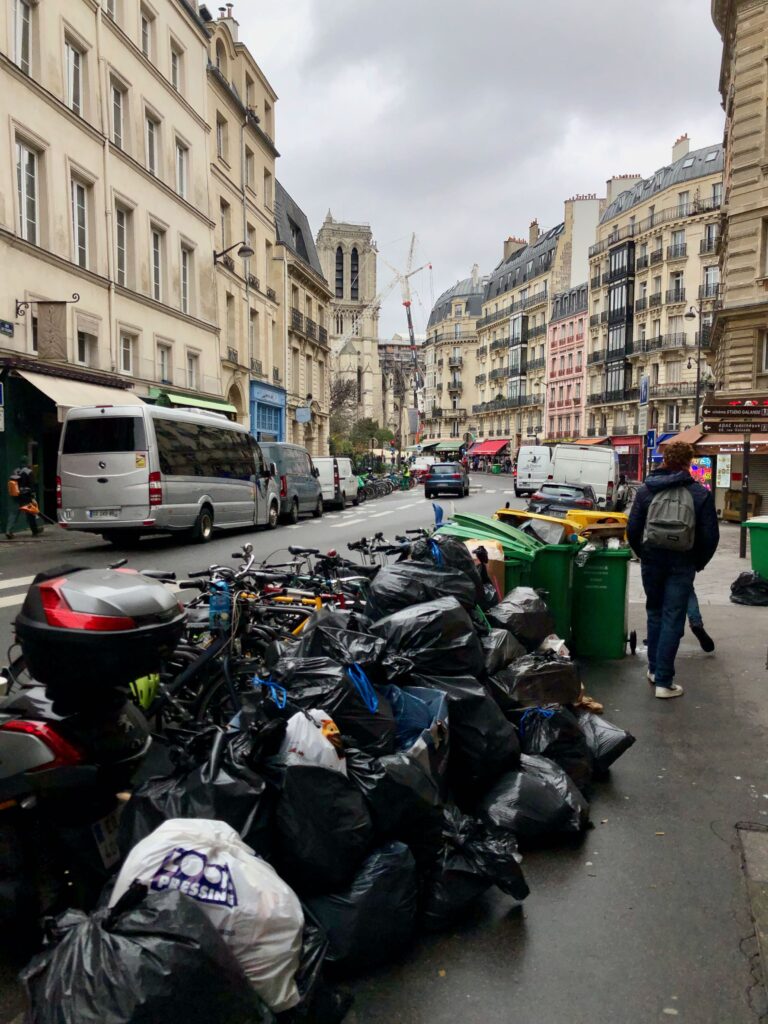
On the other hand, if you are a flexible traveler and don’t mind going with the flow, then you can probably go ahead with your trip to Paris. Most museums and attractions are open and functioning as usual during strikes. You will likely be inconvenienced in Paris during protests, especially if transportation is affected, and trash will undoubtedly ruin some of your photos but that doesn’t mean you can’t enjoy the city! Stay aware of what’s going on, practice patience, and be sensible with your itinerary!
Did this guide help you? Say thanks with a cup of coffee!
Do you need help planning your trip to Paris? Let’s chat!
Have you ever been in Paris during a strike or protest? What was you experience like?
